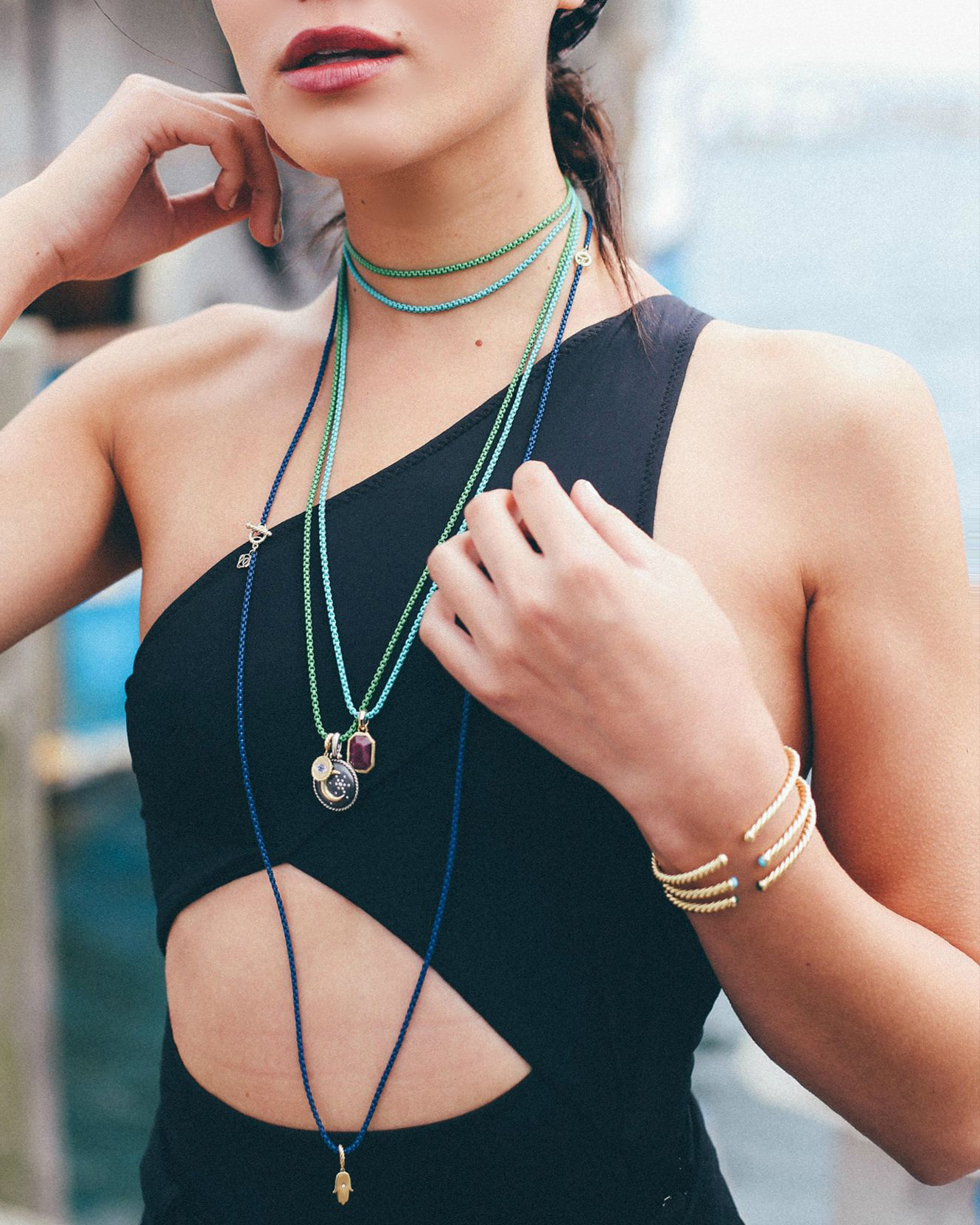How to Care for Your Jewelry in Hot Weather
Whether you’re trucking through a blistering New York City summer or you’re enjoying a luxe vacation in the sunny, sand-filled paradise of Belize, you’re still bound to show off your favorite pieces of jewelry. However, neither the thick humidity and pollution of the city nor the hot, salty air of the beach are good for your precious pieces.
We’ve put together a few tips from our experts to help you take care of your jewelry and keep them looking fresh and sparkly in the summer heat.
Our tips mostly fall under the realm of three categories: damage prevention, cleansing, and storage. These are the departments of jewelry care that you need to pay special attention to when it comes to keeping jewelry in pristine condition in warm climes.
Damage Prevention 
Before you even get the chance to inadvertently damage your jewelry, you should keep these tips in mind, especially if your summer plans include a body of water.
1. Avoid wearing particularly vulnerable pieces out on the beach.
Though you may want to show off the gorgeous 22 karat gold bracelet that you bought for yourself as a treat, it would be best if you kept that particular piece at home if you’re planning a trip to the beach. Gold is a very soft metal, and the higher the karat (meaning the purer the gold), the more vulnerable a gold piece is to nicks, scratches, and even warping. With all the sand blowing around at the beach, your precious jewelry would be at serious risk of damage.
The sea salt is also especially damaging for certain metals and gemstones. You should keep pieces embedded with soft gemstones like emerald or opal at home, since stones like these are porous and can absorb the salt from the air. That will lead to them rotting from the inside out. Leave copper-infused metals in storage as well: to keep your precious rose gold or stainless steel in perfect condition, keep them away from salt. Salt corrodes copper, and it will inevitably damage your copper-infused pieces as well.
When going to the beach, your safest bet is to don lower-karat gold or sturdy platinum pieces if you want to accessorize.
2. Keep your jewelry out of chlorine.
With warm weather often comes the insurmountable need to take a dip in the pool, but do yourself and your jewelry collection a favor by taking your pieces off before you dive in. Chlorine is terrible for jewelry: like salt to copper, chlorine is corrosive to most jewelry metals. Sources conflict about whether platinum is affected by chlorine, but to play it safe, keep platinum jewelry away from chlorine, too. The chemical is so bad for jewelry that prolonged exposure can lead to discoloration or the dulling of shine at best and cracking at worst.
3. Take off rings before entering cold water.
Your extremities tend to shrink when your body is submerged in freezing water, so it’s best to slip your rings back into your jewelry box before taking a dip to avoid losing them to the depths of the ocean or to the mercy of the pool filter.
Cleansing
Jewelry is more prone to damage during the summer season than any other time of year primarily because of all the liquids the metals are exposed to. Sweat, lotions, sunscreens, and, of course, pool water and salt water are all inevitably part of the summer experience. Follow these tricks to keep your jewelry fresh and damage-free.

Blogger Natalie Off Duty in David Yurman Jewelry, Image by Natalie Off Duty
1. Wipe your pieces down with a soft polishing cloth at the end of the day.
Prolonged exposure to sweat can seriously damage your jewelry: sterling silver can even turn black if made vulnerable to the body’s natural oils! As such, be sure to wipe off your jewelry after wearing them, especially if they’ve been exposed to your skin. Make sure you’re only using a polishing cloth, and not a bath towel, to clean the pieces, since the loops in the fabric of towels can catch on the details of your piece and loosen any gemstone settings or warp carvings.
2. Use mild soap diluted with water to give your pieces a deep cleaning.
High quality jewelry is delicate and often porous, so when you need to slather on sunscreen or moisturize dry skin, do so before you put on your jewelry, and let your skin completely absorb the lotions and creams first. Your skin should be totally dry when you put on jewelry because the chemicals in commercial lotions and creams can really damage your jewelry. If you’re the type to leave your pieces on while putting on skincare products, then you should definitely be deep cleaning your jewelry.
Use this guide we’ve put together for deep cleaning jewelry made of different types of metals to make sure you’re following the correct procedure for your specific pieces of jewelry
3. Have your pieces regularly cleaned by a professional.
Whether you deep clean your jewelry yourself or not, it’s smart to take your pieces in for a professional cleaning by a licensed jeweler. They have special jewelry cleaning machines that can remove dirt, salt, or other potentially harmful particles from your pieces. In addition to that, a jeweler will also check the settings on your jewelry to make sure no gemstones are loose.
Storage
Whether it’s the middle of July or the dead of January, it’s important to properly store your jewelry so that you can be sure that it won’t sustain damage when not in use.
1. Keep jewelry locked away in a cool, dark place when not in use.
During the summer months, you bring your jewelry out where it’s sunny and warm, and while this isn’t bad for the pieces in small doses, it’s important that when you get home, they get to have a reprieve from the bright light and the heat. Too much sunlight can fade gemstones, and, if it gets hot enough, the metal can easily bend or warp. Stash your pieces away in a cool, dark place when not in use to prevent damage.
2. Use anti-tarnish strips for silver.
If you can’t control the humidity of the room in which your jewelry is kept, always be sure to store silver jewelry with anti-tarnish strips. Even the little silica packets that come with new shoes or bags are perfect for storing with silver! The point is to wick moisture away from the environment so that silver doesn’t tarnish or rust. This is especially useful if your silver has been exposed to water, since any residual moisture from the water or from the cleaning will dry off without sustaining damage to your jewelry.
3. Store jewelry separately.
Much like how sand can scratch or nick your jewelry, hard gemstones like diamonds can do serious damage to other pieces if stored loosely. For the good of your jewelry collection, it’s best if you store pieces separately, preferably in a jewelry box lined with fabric so that each individual piece is cushioned and thoroughly protected.
Main image via Pinterest.







